new posts in all blogs
Viewing: Blog Posts Tagged with: young adult and middle grade titles, Most Recent at Top [Help]
Results 1 - 10 of 10
How to use this Page
You are viewing the most recent posts tagged with the words: young adult and middle grade titles in the JacketFlap blog reader. What is a tag? Think of a tag as a keyword or category label. Tags can both help you find posts on JacketFlap.com as well as provide an easy way for you to "remember" and classify posts for later recall. Try adding a tag yourself by clicking "Add a tag" below a post's header. Scroll down through the list of Recent Posts in the left column and click on a post title that sounds interesting. You can view all posts from a specific blog by clicking the Blog name in the right column, or you can click a 'More Posts from this Blog' link in any individual post.
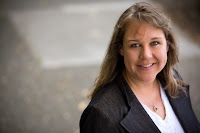
As promised, today we're getting down with Teri Brown, asking her lots of questions about her life as a writer and her new book Read My Lips! Check it out:
So, where do you do most of your writing? What's it look like? (maybe
include a picture if you can get it!) 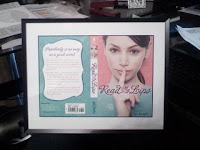
I actually work in my dining room, only it’s no longer a dining room. We took out the kitchen table and I bought a corner desk. I have all of my stuff (fax, computer, printer, filing cabinet, supplies, etc.) in one area, which I never had before. And I also have this… the best Christmas present I have ever received.
Oooh, a framed cover flat of Read My Lips! Very nice! Can you tell us how the book came about? How did you begin writing it?My deaf niece told me about an experience she had with someone who tried to speak to her in sign language even though my niece doesn’t sign. I took that experience and fictionalized it. That turned out to be the first scene in the book.
It's amazing the things that spark our imagination. Did anything surprise you or catch you off guard when you were writing your book?The first YA I wrote (which wasn’t published) was written pretty much straight through. Maybe it was because I was less experienced as a writer, but the process seemed pretty straight forward. When I started on LIPS I was amazed at how much the characters changed and grew as the story progressed. The plot kept changing too, and I had to go back and rewrite a gazillion times. That totally took me by surprise. Now I know that every book is different!
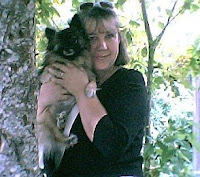 That's so true! Speaking of other books-imagine you have an offer from your dream press to publish your dream book, no matter how insane or unmarketable it might be (though of course it might *not* be). What story do you want to write next/someday and why?
That's so true! Speaking of other books-imagine you have an offer from your dream press to publish your dream book, no matter how insane or unmarketable it might be (though of course it might *not* be). What story do you want to write next/someday and why?I actually have two dream stories. One is the one I am working on, a paranormal set in Las Vegas. The characters are so alive in this one, I can’t seem to stop thinking about them. This is pretty unusual because I never thought I would write a paranormal. Even though this is a pretty light paranormal, it still has that element.
The other dream book is partly autobiographical which is probably why I keep putting it off. It’s a coming of age story set in Alfalfa, Oregon where I was raised. It’s going to be called Surviving Alfalfa. Great name, huh? I’m pretty much afraid of getting sued, though!
Clearly Teri's survived Alfalfa and then some! Come back tomorrow to find out just how similar Teri and her skater chick main character Serena really are!
We're back today with the regal Regina Scott, so get settled on your setee and let's get to know this woman who's an intriguing blend of old fashioned charm with modern day sensibilty.
2k8: Tell us, Regina, where do you do most of your writing?

RS: Actually, a lot of my writing is done on airplanes. I work part time as a consultant, and I have to fly all over the country to meet with clients. If I have any work I can do on a plane, of course that comes first. But very often, there’s nothing meaningful I can do squished between two other people for hours at a time, so I write. My first drafts are all done longhand in blank lined journals. To me, the act of writing is a creative process that comes to life in longhand, while the act of editing is an analytical process that really fits best on the computer.
When I’m home, I work in my office, and I surround myself with things
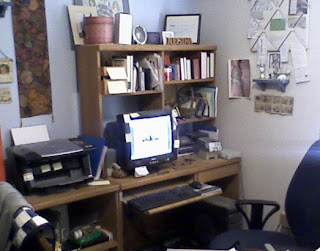
that inspire, so when I look up from typing away, I get an instant boost. The silk wall hanging my friend gave me years ago has fairies hidden among the falling leaves, prompting me to look for the unexpected blessing. A needle-point bookmark a reader made for me reminds me that someone out there appreciates my work.
One of my favorite energy boosters is a hand-written sticky over my computer, a quote from author Kate Douglas, who wrote for 20 years before making her first sale. “When I wrote the stories I wanted to write, the way I wanted to write them, when I finally stayed on a path that led to my own satisfaction, the Grail fell softly into my lap.” That speaks to the core story that fills my writing: know who you are and be true to that person.
2k8: That's an excellent value to hold to. Can you tell us how
LA PETITE FOUR came to be? How did you begin writing it and make the transition from adult fiction to young adult?
RS: I’d written almost 20 books for adults, but I felt as if something was missing. Then I read a great article in an industry publication about how every author has a core story, a theme that comes out no matter what genre they write in. I got to thinking about my core story: coming to know who you are and how you fit in the world. That works very well in romance and fantasy, two areas I was really interested in. My agent pointed out that I was missing an obvious genre: young adult literature. She thought my voice would be perfect.
I’d read some YA with my sons, but my agent’s enthusiasm made me go out and scour the shelves. Our local library has an awesome YA section, so I read everything I could. And everything I read told me this was where I wanted to be!
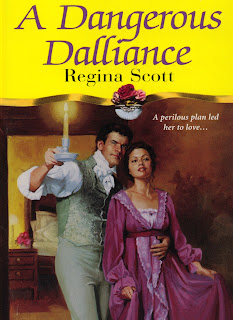
One of my published adult books,
A DANGEROUS DALLIANCE, featured a quartet of young ladies, sort of a Greek choir for the heroine. I’d had fans ask if I would ever write their story. Here was my chance! I focused on the leader, Lady Emily Southwell, and started writing. Her voice came so easily that I knew I was on to something.
2k8: It's always magical when things just click as if they were meant to be. So, how did you find a publisher for it? Was it hard making a switch?
RS: My agent wasn’t sure how a YA historical would do in the market, so she sent just the concept to several houses. We were stunned with the answers: “We want to see this when it gets done!” Razorbill wasn’t actually one of those houses. Going with them was what a friend calls “A God thing.” My editor called my agent up out of the blue and asked to have lunch, during which they discussed all kinds of things that might fit Razorbill’s list. Purely as an extra, my agent threw in LA PETITE FOUR. My editor loved it, everyone else there loved it, and they made me an offer I was delighted to accept.
2k8: What a wonderful transistion. Did anything else surprise you or catch you off guard when you were writing the book?
RS: Emily’s voice. She was the most real character I’ve ever written. She’ll tell me exactly how she feels about a situation. As we were working through the revision process, my editor suggested a change that seemed pretty basic to me. To my surprise, Emily refused. No matter which way I wrote it, she wouldn’t cooperate. I finally demanded to know why, and she told me in no uncertain terms. Wow. I had no idea she felt that way, but you can be sure those feelings got factored into the story, making it stronger.
You gotta love it when your characters take charge! Regina, thanks for taking the time to speak with us.
Come back Wednesday when we'll take a walk in Lady Emily's shoes.
May has been a jam packed month, but we're giddy about having one more debut author. Well, she's sorta a debut author. Regina Scott is actually a best-selling, adult regency author making her YA debut.
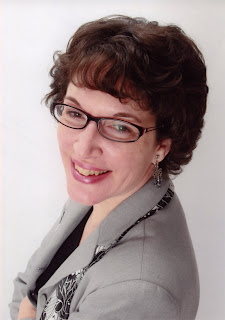 Regina always wanted to be an author. She started writing stories for her friends in the third grade. In the eighth grade, she got in trouble for writing a parody of school life, set in a mythical medieval kingdom (hey, she always loved those long dresses too), and lampooning the hottest guy in school. The parody was an instant bestseller, at least at Eisenhower Middle School.
Regina always wanted to be an author. She started writing stories for her friends in the third grade. In the eighth grade, she got in trouble for writing a parody of school life, set in a mythical medieval kingdom (hey, she always loved those long dresses too), and lampooning the hottest guy in school. The parody was an instant bestseller, at least at Eisenhower Middle School.
She had to wait a little longer for her next bestseller. After numerous short stories and articles in magazines and trade journals, she got serious about her novel writing and published 17 historical romances for adults, several of which won awards from booksellers and readers. And then her clever agent showed her it would be a lot more fun to write for young adults instead.
Regina and her husband are the parents of two teenage sons. They reside in the Tri-Cities of southeast Washington State and are members of the Church of the Nazarene. Regina is also a decent fencer and owns a historical, fantasy, and science fiction costume collection that takes up over a third of her large closet (remember what we said about long dresses?).
LA PETITE FOUR tells the story of 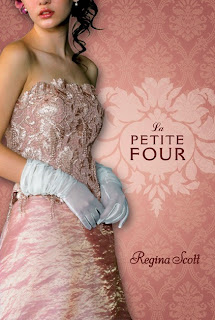 Lady Emily Southwell and her three dearest friends who intend to take Society by storm by hosting the most elegant, elaborate, exclusive ball 1815 London has ever seen. But dashing Lord Robert Townsend insists that Emily honor the engagement their parents spoke of years ago. Has he no sensibilities? No refinement of spirit? No idea he has laid down a challenge Emily has no choice but to accept?
Lady Emily Southwell and her three dearest friends who intend to take Society by storm by hosting the most elegant, elaborate, exclusive ball 1815 London has ever seen. But dashing Lord Robert Townsend insists that Emily honor the engagement their parents spoke of years ago. Has he no sensibilities? No refinement of spirit? No idea he has laid down a challenge Emily has no choice but to accept?
Yet as Emily and her friends come up with ever wilder ways to put Lord Robert in his place, they stumble across secrets better left untold. With the aid of mysterious James Cropper, who seems to be following Lord Robert (or, gasp! Lady Emily?), the girls must determine whether Lord Robert has more up his sleeve than a nicely muscled arm. Otherwise their dreams of a smashing Season just might come crashing down.
Advanced praise for LA PETITE FOUR:
Sophie at "Couture's Fashionable Reads" was kind enough to award La Petite Four a 7 out of 10 in the book's first review. "With clever plot twists, spying, and debonair courtiers, this book will keep you reading to the end!"
Come back tomorrow for an interview with Regina in which she explains the how and the where of her writing process. And take it from us...not many people approach things the way she does.
Feeling hungry? Sarah Prineas is doling out some viritual biscuits and bacon for breakfast along with the reasoning behind her fattening yummy obsession.So…biscuits? Bacon?
Yes, there's a whole biscuit subplot running through the three
MAGIC THIEF books. Biscuits dripping with butter, and biscuits with bacon, and biscuits with cheese and jam, and stale biscuits dunked in tea, and biscuits used as bait to catch a dragon…
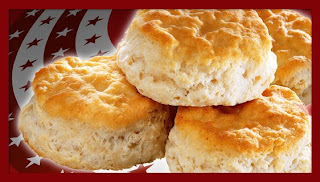
In the appendices at the back of book one, there are even two biscuit recipes. One you'd want to make, the other you'd want to make and then feed to your dog (if you didn't like your dog).
There is a reason for the biscuit plot. Before he gets involved in magical doings, my protagonist, Conn, was a "gutterboy"�a street kid who made his living picking pockets and locks in the Twilight, the bad part of town. Because he hasn't always gotten enough to eat, he's a little obsessed on the subject of food.
Unlike Benet, the biscuit-baking bodyguard/housekeeper from the book, I am not much of a chef. The Pillsbury dough-boy makes the biscuits at my house. But I do know how to cook bacon.

There is an art to it, if you have the patience. You want the bacon nice and crispy, but not burnt, and once the bacon grease gets hot, burnt can happen very fast. I learned how to cook bacon from a friend. What you do is, get a cast-iron pan. Open the bacon package. Throw the bacon in, all in one lump. Cook on very low heat for, like, an hour. Drain it on a paper towel. Save the bacon grease to put on the dog's biscuits.
On the day I signed the book contract with HarperCollins, can you guess what the Prineas family had for dinner?
Now that we've stirred up some some unrelenting cravings in you, make sure to swing by tomorrow when Sarah talks about a book that gave her a whole new perspective on editors.

By:
The Class of 2k8,
on 5/21/2008
Blog:
2k8: Class Notes
(
Login to Add to MyJacketFlap)
JacketFlap tags:
maps,
young adult and middle grade titles,
sarah prineas,
tolkien,
the class of 2k8,
the magic thief,
bilbo,
hobbits,
thror,
fantasy,
london,
Add a tag
We all know writers have a love of words, but did you know Sarah Prineas also has a love for maps?
An interesting thing about hobbits is they don't like to travel, but Bilbo always loved maps. Especially Thror's map.
I love maps, too, with a deep and geeky love for things like magical runes and "here there be dragons" and the compass rose and place names like "the Withered Heath" and "Mirkwood the Great".
For fantasy writers, maps are really important because we often create what Tolkien called a "secondary world" that is, a world completely removed from the "real" world, with its own geography and history. Maps make real the places of the imagination. That's why you'll see maps in the first couple of pages of many fantasy novels, including THE MAGIC THIEF.
When the book was being designed, my editor asked me for a map sketch to give the artist. I started out by consulting a really excellent map of 18th century London because Wellmet, the city in my book, is very loosely based on it, especially Southwark which was, back then, the seedy side of the Thames. I was inspired by the twisty streets with the funny names:
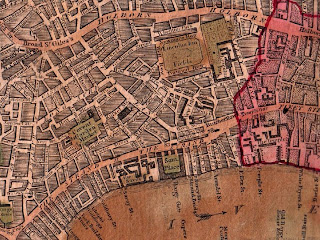
London map
Then I started sketching, coming up with twisty streets and funny names of my own. This is a detail from the Twilight, the part of Wellmet where you wouldn't want to live:
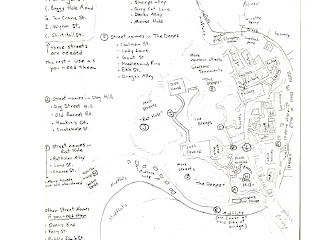
my map sketch
Then the artist for
THE MAGIC THIEF took my sketch and turned it into a real map which is right at the beginning of the book:
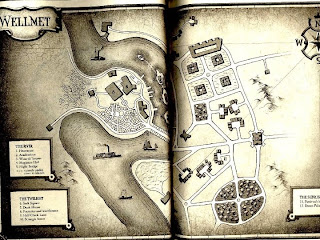 book map
book map
I have a puzzle version of Thror's map, by the way. It's one of my favorite things in the world.
What a cool thing to see the evolution of a story map. Now be sure to come back early tommorrow because Sarah will be treating us with biscuits and bacon. Yum!
We're back with the lively Sarah Prineas for an intimate interview with this imaginative author. Settle in for your chance to get the 1 on 1 scoop.
2k8: Tell us, Sarah, where do you do most of your writing? Are you a coffee house writer or house hermit?
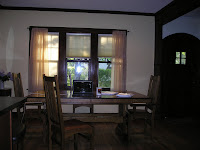 Sarah: House hermit. My house is pretty small so I don't have a home office. During my "writing days" (days off from my halftime dayjob) I write at the kitchen
Sarah: House hermit. My house is pretty small so I don't have a home office. During my "writing days" (days off from my halftime dayjob) I write at the kitchen 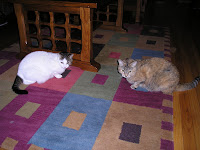 table. Keeping me company are the cats, Feather and Sparkle (who, by some weird coincidence looks just like Lady, the cat in THE MAGIC THIEF). This is a picture of them
table. Keeping me company are the cats, Feather and Sparkle (who, by some weird coincidence looks just like Lady, the cat in THE MAGIC THIEF). This is a picture of them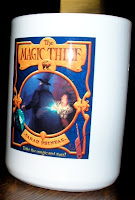 looking symmetrical instead of fighting, which they do on a schedule. I write on a black stealth MacBook computer named Sparks. It has a dragon sticker on it. Also keeping me company when I write is a cup of Lady Grey tea with cream and sugar. Check out the mug! One of my best buddies sent it to me after I got the book's cover art.
looking symmetrical instead of fighting, which they do on a schedule. I write on a black stealth MacBook computer named Sparks. It has a dragon sticker on it. Also keeping me company when I write is a cup of Lady Grey tea with cream and sugar. Check out the mug! One of my best buddies sent it to me after I got the book's cover art.
2k8: What a great gift! So, how did THE MAGIC THIEF come about? What got you started with the story?
 Sarah: It was originally supposed to be a story for Cricket magazine. I had the first couple of lines--"A thief is a lot like a wizard…"--in a file on my computer for over a year: but I didn't have a protagonist or a story. But once I saw the letters to the editor in Cricket asking for mores stories with magic and wizards and more two-part stories, Conn's voice and character leaped into being.
Sarah: It was originally supposed to be a story for Cricket magazine. I had the first couple of lines--"A thief is a lot like a wizard…"--in a file on my computer for over a year: but I didn't have a protagonist or a story. But once I saw the letters to the editor in Cricket asking for mores stories with magic and wizards and more two-part stories, Conn's voice and character leaped into being.
2k8: It's amazing how things evolve, isn't it? How did you end up finding a publisher for it? Give us the deets.
Sarah: My publication story is pretty much textbook and boring. About a month after finishing the novel I got an agent through a referral. The agent had me do some revisions. She sent off the manuscript to 10 editors and after a couple of weeks we did the deal with HarperCollins. As my agent said later, "It's the way deals are supposed to work but never do." Except that it did! It took about a year from the day I started writing the book to the day I sold it.
2k8: Very cool! We like it when things go smoothly. Did anything at all catch you off guard when you were writing it?
Sarah: Oh, yeah. I didn't know I was a children's writer! Well, and first I didn't know it was a novel. It was supposed to be a story, but I found Conn's voice so fun to write and the possibilities of the Wellmet world so exciting, that the story turned into a novel manuscript. When my agent sent it to mainstream children's publishers instead of sf/fantasy ones I was surprised. She knew what she was doing, though.
2k8: We love it when all the pieces fall perfectly together. Now what question won't most people know to ask you? And what's your answer?
Sarah: What's your favorite disease? Lyme disease, definitely. Book one was put onto a "crash" publication schedule, so the editing process  happened quickly. My editor called at the beginning of June and asked if I could finish edits by the end of the month. Then I caught Lyme disease (stupid tick). All of a sudden, edits needed to be done by the end of the week. And I did them! With a 102 fever and chills from the Lyme disease. The funny part of it is, my hometown is Lyme, Connecticut. Not funny ha-ha, really…
happened quickly. My editor called at the beginning of June and asked if I could finish edits by the end of the month. Then I caught Lyme disease (stupid tick). All of a sudden, edits needed to be done by the end of the week. And I did them! With a 102 fever and chills from the Lyme disease. The funny part of it is, my hometown is Lyme, Connecticut. Not funny ha-ha, really…
Wow, talk about rough revisions! And you and Meg Cabot now have something in common. Hopefully you'll share some good things too! Thank you so much for your time, Sarah.
Tune back in tomorrow when Sarah will expound on maps!
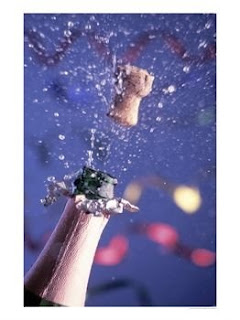
Please welcome M.P. Barker, debut young adult author of A Difficult Boy.
M.P. is a very interesting and unique member of the Class of 2k8. And we wish you all got a chance to hang around her the way we do. But since you don't, we're doing this interview to help you get to know her.
Best of all, M.P. is letting us give away her biggest secret.
Here goes ...
M.P. Barker is a TIME TRAVELER!
M.P. Barker: Actually, I'm an archivist and historian. Which, I guess, is sort of the same thing.
2k8: But you worked in nineteenth-century rural New England, right?
M.P. Barker: I was a costumed historical interpreter at Old Sturbridge Village. I milked cows, mucked out barns and found inspiration for my historical novel, A Difficult Boy.
2k8: That mucking out of barns sounds ewwww. But the rest sounds very cool. Are you still time traveling?
M.P. Barker: Well, I work now as an archivist at the Connecticut Valley Historical Museum. This gives me the opportunity to read other people's diaries and letters and snoop through their photo albums.
2k8: Love it! Old-time gossip! What else do you do?
M.P. Barker: I'm also a freelance historical consultant. I've written exhibit text, scripts for historical dramatizations, nominations to the National Register of Historic Places, fundraising materials, and planning studies.
Thanks, M.P. And, now, onto A Difficult Boy. First off, here's the wonderful cover.
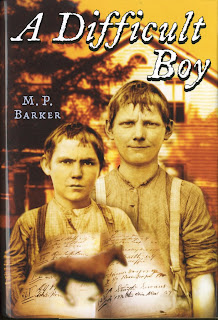 cover art credit: Marc Tauss
cover art credit: Marc Tauss
And here's the flap copy:
It's 1839. Nine-year-old Ethan doesn't want to be an indentured servant. But his family has no other way to pay off their debt, so Ethan must work for Mr. Lyman, a wealthy shopkeeper in their Massachusetts town. At first, Ethan tries to make friends with the Lymans’ other indentured servant, Daniel, a moody Irish teenager. But Daniel, as everyone says, is a difficult boy, and wants nothing to do with him. Then Ethan is shocked to see Mr. Lyman beat Daniel. Soon, Ethan, too, is suffering Mr. Lyman’s blows. Self-preservation finally drives the two boys together, and they begin to form a friendship, but when the boys discover a dark secret about the patron, their lives may be changed forever.
2k8: How in the world did you ever come up with this fantastic idea for a book?
M.P. Barker: I was cataloguing some documents in the archives and came across a 275-year-old bill that an indentured servant’s master had sent to the boy’s mother, charging her for the cost of finding and bringing back her runaway son. That got me thinking: Why did the boy run away? What would happen if his mother couldn’t pay the bill? What kind of crummy cheapskate was that master?
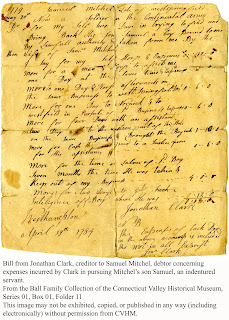 photo credit: Connecticut Valley Historical Museum, from their archives
photo credit: Connecticut Valley Historical Museum, from their archives
2k8: And how did the bill become your novel?
M.P. Barker: Well, the document was still on my mind when I went to my weekly writing group. So I began doing a few character sketches. Since I didn’t know as much about the 1770s as I ought to, I transferred the time to the 1830s, which I did know about from working at Sturbridge Village. Once the characters started growing, they began to take on their own lives, as characters have a way of doing, and I sort of lost control. My first draft was 700 pages! Luckily for readers, the published version is now just shy of 300 pages with two discontented indentured servants (one of them Irish), one cruel master with a closet full of skeletons, one son of said cruel master with a deep, dark secret of his own, one dairymaid with a serious crush on the master’s son, and one mysterious peddler who wanders in and out inadvertently stirring up trouble.
2k8: Those characters sound fascinating!
M.P. Barker: Thanks! Turning that material into historical fiction was an adventure and a challenge. I wanted to create characters that readers could identify with, while allowing them to see that those characters aren’t merely modern people wearing funny clothes and living without indoor plumbing. Daniel’s and Ethan’s thoughts and beliefs are very different from ours, yet they grapple with familiar problems: prejudice, abuse, poverty, grief, and loneliness. And they cherish the same things that matter to kids and adults today: loyalty, kindness, trust and most of all, friendship.
2k8: Congratulations, M.P. You are a published author now! And, hey, don't forget you're featured on our blog this entire week. So, make sure you time-travel your little self back here for Tuesday's interview.
Somebody has spray-painted our books! The titles are hidden! Our names are missing! But we bet you can still figure out a few things. C'mon, play along!
Here's how this works: Above each cover is a clue and three possible answers. If you're still not sure of the right answer, and want to guess some more, just wait a little bit, and check the comments section below. Class members may add more clues as the day goes on. But if it's instant gratification you're after, hop over to our site to find all the info you need.
When you do come up with the answers, shhhhhh. Don't spoil the fun by posting them. We'll show you the right ones, and the cleaned-up covers, the next day.
Ready?
#1 This Florida author had less than model behavior during her high school math classes.
a. Marissa Doyle b. Nancy Viau c. Debbie Reed Fischer

#2 This is not a middle-grade novel.
a. Sleepless b. The Possibilities of Sainthood c. Undone

#3 This author has been on a nationally televised game show.
a. Jennifer Bradbury b. Jenny Meyerhoff c. Zu Vincent

 See part one: Author Interview: Deborah Heiligman on Celebrate Passover (National Geographic, 2007).
See part one: Author Interview: Deborah Heiligman on Celebrate Passover (National Geographic, 2007).
Are you part of a writers' critique group and/or active in any writer organizations? What role does community play in your writing life?
Community plays a huge part in my writing life because I am a social person and too much time alone drives me crazy. For eighteen years I lived in Bucks County, PA; and I built up a great community of writers there.
The Bucks County Authors of Books for Children has been meeting for more than ten years, and they are still my best writing buddies even though I have moved to New York. I go back for meetings as often as possible because they are just the best. They are all brilliant and talented authors and terrific friends. And I can call up any of them on the phone to discuss just about anything. I could go on, but I don't want to gush too much.
I also have a best writing buddy who lives in California. We met online and have met in person; we talk on the phone, e-mail all the time. With all of these people we talk about writing a lot, the business, and life (kids, etc.).
Fortunately I am also meeting wonderful people in New York. Children's book authors are seriously the nicest people in the world. I go to a class where I meet lots of people, I go to SCBWI things, and I've got a tiny critique group here. I have to be careful not to socialize too much, though--gotta write, gotta write.
Oh, one more huge part of my community is my husband. He's a writer (for adults) and also now a professor of journalism, so I've got it made!
If you could go back in time and talk to your beginning writer self, what would you tell her?
That's a really good question. I don't know. Maybe I'm not old enough? I sometimes lament the fact that I don't have a cohesive list--I have just done books as they've come to me, either though my heart and mind, or from an editor's request. Maybe I should have had more of a plan, created more of a "brand." But I love writing about all different kinds of things in all different formats, so I would probably still tell my younger self to follow your heart.
Congratulations on the publication of Celebrate Easter with Colored Eggs, Flowers, and Prayer (National Geographic, 2007)! What was your initial inspiration for writing this book?
Thanks. It's book number six in the series that's been a joy and a challenge to do. My inspiration for this book was to really learn about a holiday that I've heard about and been next to forever but really didn't know much about. I always wanted to celebrate Easter as a kid, but I also felt uncomfortable around it being Jewish.
One of my favorite things to do is to write about things I (initially) know nothing or little about. For me writing is learning, and I get paid to learn. It's a dream!
Could you briefly describe the content?
It's a global look at Easter--how it's celebrated, as well as the history of the holiday.
What were the challenges (literary, research, psychological, logistical) in bringing it to life?
This was an interesting and difficult book to write, as they all are. The biggest challenge was balancing the religious aspects of the holiday with the secular one. I was really worried about how to write about the crucifixion and the Easter Bunny in the same book. I talked a lot with my consultant and with other people about that. My editor was a big help, too. I believe we've done a good job with it.
What is it about holidays that appeals to you as a writer? Have you done other books in this area?
I am fascinated by religion and the role it plays in people's lives. I also think it's so important to share religions with people not of the same faith and background.
When I was deciding to do the series one of my writing friends said, "Do it. You will be contributing to world peace."
I hope she's right. I truly believe that if all kids learn that people so much like them have different traditions, and that those traditions have a lot in common with their own traditions--as well as differences--then they will be less likely to hate those people when they grow up.
What are some of your favorite recent reads?
I read a lot of different kinds of books. I'll list some of my favorites in different varieties: Desperate Characters by Paula Fox; Anna Karenina by Leo Tolstoy; Greetings From Planet Earth by Barbara Kerley; Magpie Gabbard and the Quest for the Buried Moon by Sally Keehn; Twisted by Laurie Halse Anderson; Suite Francais by Irene Nemirovsky. I have many more on my to-read pile, of course.
What do you do when you're not writing?
I read, go on long walks with my husband, spend time with family and friends, go to movies, cook, go on the treadmill (usually watching episodes of TV shows I like), and now that I live in New York after many years away, explore the city.
What can your fans look forward to next?
I am working on a number of books right now. One is a picture book about a fascinating mathematician, Paul Erdos. That book will come out from Roaring Brook in a couple of years. I am also working on a biography of Charles Darwin for publication in fall 2008. It is for the YA market and is focusing on his relationship with his wife, Emma. Henry Holt is the publisher. I am also working on a YA novel, and I have a couple of fiction picture books in the works and a stack of ideas I hope to turn to.
Cynsational Links
Editor Interview: Nancy Feresten of National Geographic Children's Books from Cynsations.
 Deborah Heiligman on Deborah Heiligman: "I have two great sons. When my older son was about fourteen or so he started calling me 'Psychotic Mama,' or 'P.M.' for short. When my younger son was about that age, he wrote a song about me called 'Momma is Distraught and She's Coming After You...' I'm really glad that I have given my children material to write about."
Deborah Heiligman on Deborah Heiligman: "I have two great sons. When my older son was about fourteen or so he started calling me 'Psychotic Mama,' or 'P.M.' for short. When my younger son was about that age, he wrote a song about me called 'Momma is Distraught and She's Coming After You...' I'm really glad that I have given my children material to write about."
What about the writing life first called to you? Were you quick to answer or did time pass by?
I always loved to write, and teachers told me I was good at it. I remember my first narrative non-fiction piece. I was in elementary school, and we had to do reports on the digestive system. I did mine from the point of view of a bite of a chocolate chip cookie. (When I tell that to kids in schools they always say, "Ew, gross!" but I still don't think it is at all disgusting.)
But growing up in Allentown, PA, I didn't know regular people could be writers. I thought writers were either old men with long white beards, or movie-star types who lived in mansions in Beverly Hills.
So, although I kept writing, and was editor of my junior high newspaper and my high school newspaper, it didn't occur to me that I could be an author. I did think about being a journalist. I also thought about being a social worker, a lawyer (the kind that saved the world, not the kind that made money), & etc.
It wasn't until I got to college (Brown) that I started to think maybe I could be a writer for real. But then all the people who said they were going to be writers wore all black and smoked cigarettes and drank endless cups of coffee. So I thought, well, that's not me. I guess I'll never be a writer. But I bet most of those people are now lawyers (the kind who make money), and here I am a writer. Of course I do drink too much coffee and I do wear black a lot, but cigarettes, never!
What made you decide to write for young readers?
It was sort of an accident, at first. I was moving to New York (from Boston, where I was working on a Jewish magazine) to be with my boyfriend, and so I was looking for a job.
Through school connections, I ended up interviewing at Scholastic. The personnel woman said, "Well I have an opening on the fourth-grade magazine, but you probably aren't interested in that are you?" Gamely (I really wanted to move to the city with a job), I said, "Sure," when in fact I wasn't. But when I interviewed with the editor and learned all about Scholastic News, I liked the sound of it a lot. And then I took home the trial assignment and doing that I fell in love with writing for children. (I still remember everything on that assignment.) Fortunately, I got the job! In fact, I got a job offer and a marriage proposal on the same day...
Could you tell us about your path to publication, any sprints or stumbles along the way?
After I left Scholastic because I had a baby and I didn't want to be away from him all day, I decided I'd be a freelance writer. I wrote for both children's and grown-ups' magazines, but I didn't think about writing books for kids. Yet. The baby grew to be a toddler who adored books, and I spent most of my day reading with him.
One day I took a nap and I woke up with an idea for a children's book--with the actual words, really. I worked on it and sent it to my husband's agent. She had no knowledge about children's books, but she had a kid, and she knew two people in children's publishing. She sent it to the first one, who rejected it because it rhymed. My instinct was to rewrite it so it didn't rhyme, but she said, "let's send it out again." So she sent it to Harper & Row (as it was called then), and they took it. Into the Night (1990) was my first book. It was beginner's luck, though, how quickly that happened. I've published a lot of books, but I've also had a lot of rejections.
For those new to your work, could you highlight a few of the recent titles on your backlist?
I'm in the middle of publishing a series of holiday books from National Geographic. The first four (fall 2006) are Celebrate Hanukkah, Celebrate Ramadan/Eid Al-Fitr, Celebrate Diwali and Celebrate Thanksgiving. Before that I published a picture book called Fun Dog, Sun Dog (Marshall Cavendish, 2005), about my golden retriever Tinka. It was my fifteenth book. It rhymes, too--only my second rhyming book. Let's see. There's also High Hopes: A Photobiography of John F. Kennedy (National Geographic, 2003)(forward by Eunice Kennedy Shriver) and not recent but one of my better known books, From Caterpillar to Butterfly (HarperCollinsm, 1996). It's being made into a Big Book.
Congratulations on the publication of Celebrate Passover with Matzah, Maror, and Memories (National Geographic, 2007)! What was your initial inspiration for writing this book?
Thank you. The inspiration wasn't exactly mine. An editor at National Geographic asked me to do a series of books about holidays, and the more we talked the more excited I became. It was such a great project for me, having majored in religious studies years ago. I have never lost my fascination with all religions. So, once I decided to do the series, she and I came up with the first holidays, and of course Passover had to be one of them. It's such an amazing holiday---it's got it all: a great story, great food, and it's family-centered. It's one of my favorite holidays.
Could you briefly describe the content?
Each of the books in the series is about how we celebrate the holiday, both here and in countries around the world. I also talk about why we celebrate it and the history of the holiday. So with Passover, we have the story of the Exodus, of course, and Jews all over the world getting ready for and having a seder. The book is illustrated by amazingly beautiful photographs found by the photo editor at National Geographic, Lori Epstein, who is a genius.
What was the timeline from spark to publication, and what were the major events along the way?
It was all very fast, mostly because I was doing about four books at a time. But I think from starting each book to publication was about a year. The major events: research, talking to my consultant; writing, looking at photos and layout; revising; looking at new pages; revising; realizing uh-oh we need a recipe, finding a recipe, making the dish; looking at revised pages; revising; getting the consultant to write her note; editing her note; last-minute fixes, changes.
What were the challenges (literary, research, psychological, logistical) in bringing it to life?
Oh, so many! People outside the business don't always realize that writing short is so much harder than writing long. And writing for young kids I think is harder than writing for adults or older kids. First of all, you can't assume anything. So everything has to be explained. But you don't want to explain it in such a way that it seems text-booky. You want it to be beautiful where it can be, to sing. And you don't have much room to do it. At all. The word count for Celebrate Passover, the main text, is probably about 1200 words. Also you want it to flow nicely and to be fun. Oh my. Reliving this is exhausting me!
What advice do you have for beginning writers?
Ah, I have so much advice. Marry rich. Become a celebrity first. Go to law school.
Okay, you want serious advice, right? Here goes:
1. Read all kinds of things--good stuff, bad stuff. Different genres. Poetry, sci fi, non-fiction. Books for different ages (even adults). Stuff you thought you'd never read. (Graphic novels; bodice rippers.) Books you loved as a child. Books that are popular now. Books that other people hate/love/can't figure out.
2. Analyze what you read. Why did you like it? Why didn't you like it?
3. Take your writing seriously. It is a job. Treat it like one. Not like a hobby. Which means..
4. Work really hard. Which means...
5. Write regularly. I'm not going to say you have to write every day, but you do have to write on a regular basis for a good amount of time. Which means...
6. You will write crap and you will revise. Revision is the key to writing.
7. Get to know other writers, especially if you are a people person. It can be a lonely job. Also I think it's really important to surround yourself with other people who are taking writing seriously.
8. Persevere. If you love it and work at it and take it and yourself seriously, you are a writer. And you will be published.
How about those specializing in non-fiction?
All of the above applies. Plus, take research seriously. You need many sources and many different kinds of sources. You need to show it to experts in the field. The biggest tip is: hone your natural nosiness. Let it work for you.
How do you balance your time as a writer (researching, writing, etc.) and as an author (marketing manuscripts, promoting books, etc.)?
With difficulty. I mean, really. It's like twelve jobs, isn't it? I often try to do all at once, but it's probably a better idea to set aside discrete times to do each--certain days of the week for times of the day for marketing, for example. With research and writing, I usually research first and then write. But there is always more research to do while I'm writing. And (not to be too confusing) I do sometimes write when I research because when I take notes sometimes whole sentences or paragraphs will come to me and those will end up in the book.
Cynsational News & Links
See part two: Author Interview: Deborah Heiligman on Celebrate Easter with Colored Eggs, Flowers, and Prayer (National Geographic, 2007).
Editor Interview: Nancy Feresten of National Geographic Children's Books from Cynsations.


 That's so true! Speaking of other books-imagine you have an offer from your dream press to publish your dream book, no matter how insane or unmarketable it might be (though of course it might *not* be). What story do you want to write next/someday and why?
That's so true! Speaking of other books-imagine you have an offer from your dream press to publish your dream book, no matter how insane or unmarketable it might be (though of course it might *not* be). What story do you want to write next/someday and why?






















Happy release, Teri!!! I'm going to go haunt the bookstores today and announce to everyone within hearing range that they MUST pick up Read My Lips!!!
Cheers!!!
Gerb
"Surviving Alfalfa" is an awesome name!!
I'm enjoying these posts, Teri!
both those new ideas sound awesome, teri!